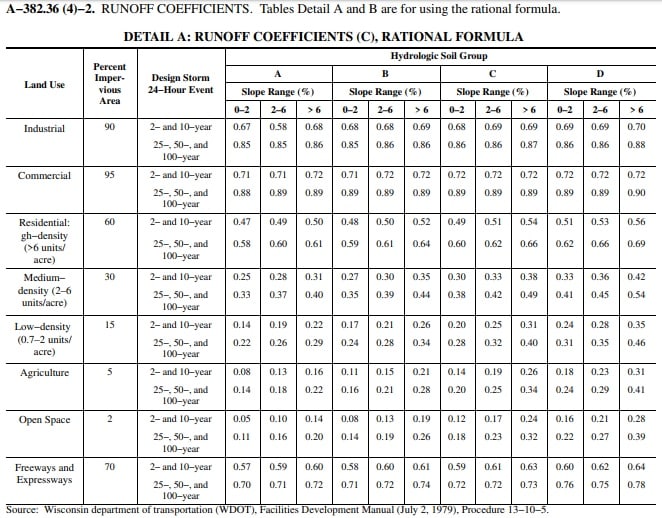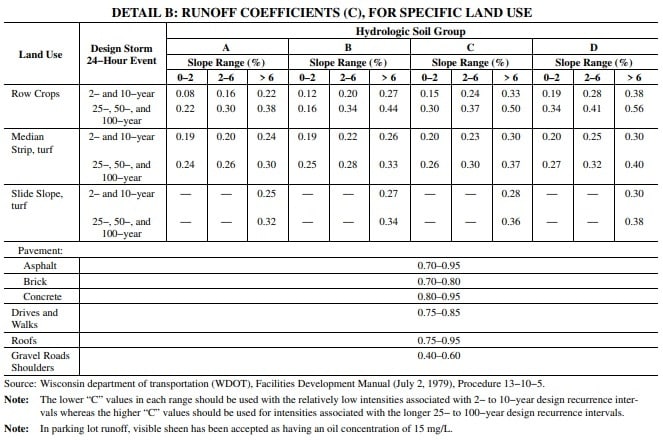Please explain what the parameter "Percent Impervious Area" means and how to use it when calculating the runoff coefficient?
Why do the values of runoff coefficients for different soil groups (A,B,C,D) differ depending on the land use?
Please give an example of calculating the runoff coefficient for areas with mixed land use, in particular when commercial and industrial areas are used.


In all the documents that I studied, the depth of the pipe depends only on the depth of freezing of the soil or equal to it. Is there really no other circumstances that affect the depth of the pipe and how is it calculated? I correctly understand that the depth of the pipe is always taken equal to the depth of freezing of the soil?
In many documents that I studied, the minimum velocity in a sewer pipe is 2 feet per second, do I understand correctly that a minimum speed of 2 feet per second is suitable for all diameters, and not just minimum ones?
This table shows the minimum slopes for pipes of different diameters, please explain how these minimum slopes are regulated, as I understand it, the minimum slopes give a minimum speed of 2 feet for pipes with appropriate diameter. Or are these minimum diameters dictated by the design features of the pipe?

Why do the values of runoff coefficients for different soil groups (A,B,C,D) differ depending on the land use?
Please give an example of calculating the runoff coefficient for areas with mixed land use, in particular when commercial and industrial areas are used.


In all the documents that I studied, the depth of the pipe depends only on the depth of freezing of the soil or equal to it. Is there really no other circumstances that affect the depth of the pipe and how is it calculated? I correctly understand that the depth of the pipe is always taken equal to the depth of freezing of the soil?
In many documents that I studied, the minimum velocity in a sewer pipe is 2 feet per second, do I understand correctly that a minimum speed of 2 feet per second is suitable for all diameters, and not just minimum ones?
This table shows the minimum slopes for pipes of different diameters, please explain how these minimum slopes are regulated, as I understand it, the minimum slopes give a minimum speed of 2 feet for pipes with appropriate diameter. Or are these minimum diameters dictated by the design features of the pipe?

